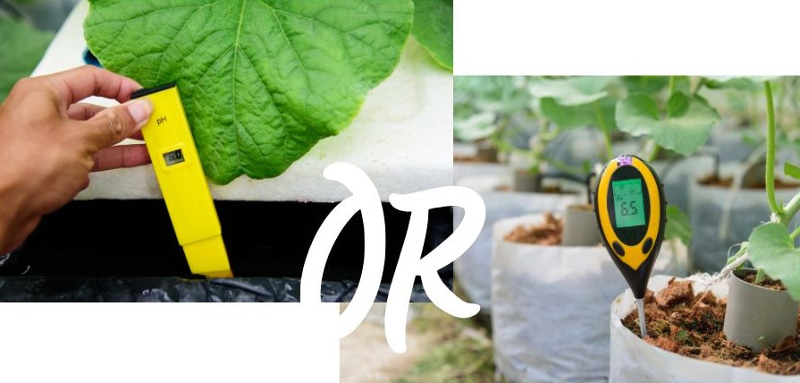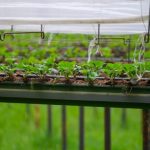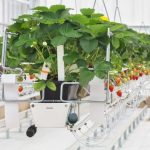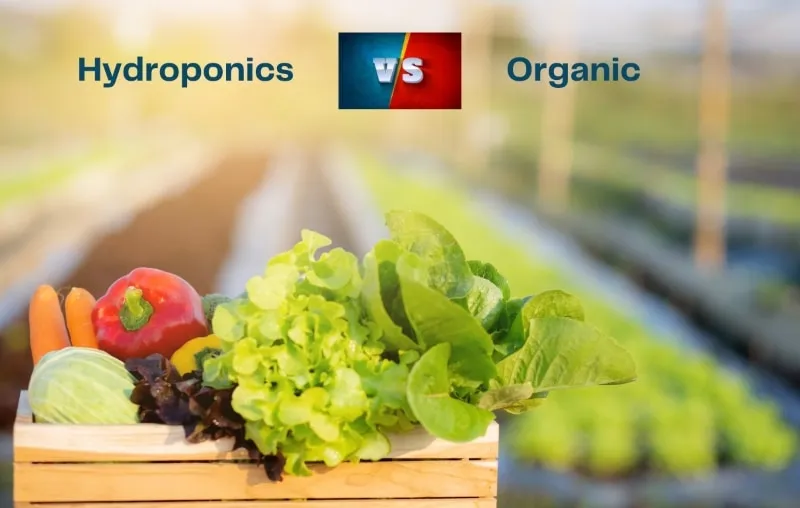In the world of alternative gardening methods, you may find yourself wondering about the differences between hydroponics vs. aeroponics. These modern techniques are quickly gaining popularity among both commercial and home-based growers, with their potential for higher yields and reduced resource usage. As someone interested in these innovative growing systems, it’s essential to understand their similarities and differences.
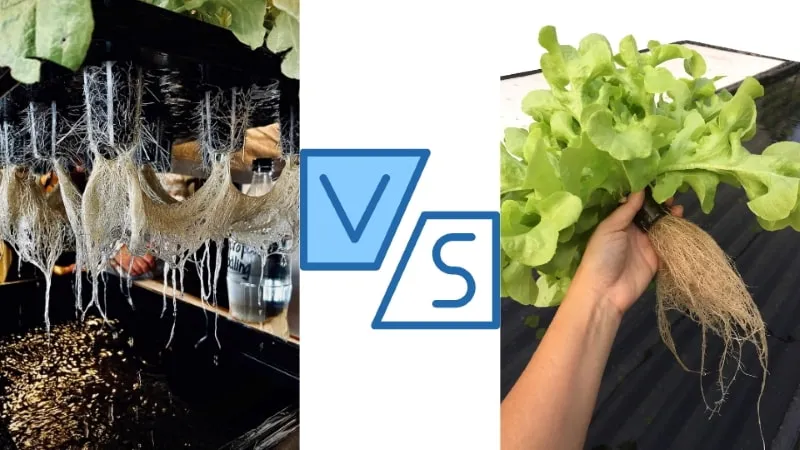
Hydroponics is a method of growing plants without soil, relying on a nutrient-rich water solution to deliver nourishment directly to the plant roots. On the other hand, aeroponics also omits the need for soil but uses a fine mist to supply nutrients and water to the roots, resulting in an air-based growing environment. Both methods boast distinct benefits, including increased water and nutrient efficiency as well as faster plant growth rates.
As you explore hydroponics vs aeroponics, you’ll discover that each system has its own set of advantages and challenges. For instance, hydroponics is generally more affordable and easier to manage, while aeroponics can lead to better harvests with fewer resources. By understanding these key differences, you can make a well-informed decision that best aligns with your specific gardening goals and preferences.
Understanding Hydroponics and Aeroponics
The difference between aeroponics and hydroponics lies in the methods used to deliver nutrients to the plants. Both of these innovative soilless systems share roots in the Greek words “aer,” meaning air, and “hydro,” meaning water. However, their individual processes provide unique benefits and drawbacks that you should consider when choosing the best approach for your needs.
Hydroponics, a well-known method among soilless growers, involves immersing plant roots in a nutrient-rich water solution. Your plants will receive all the necessary nutrients directly from the water rather than the soil, providing optimal growing conditions for sturdy, healthy plants. Plus, hydroponic systems are generally less expensive to set up and maintain compared to their aeroponic counterparts. If the cost doesn’t deter you, learn how to set up aeroponics at home.
On the other hand, aeroponics takes the soilless concept further by removing the need for a constant water solution. In an aeroponic system, your plants will be suspended in air while nutrient-enriched water mist continuously nourishes their roots. This process consumes significantly fewer resources than hydroponics and typically results in faster growth and improved harvests.
When comparing the two methods, keep in mind that hydroponics offers a simpler, more cost-effective approach for beginners. Aeroponics, while resource-efficient and high-yielding, often entails higher initial costs and a steeper learning curve. By understanding the key differences between aeroponics and hydroponics, you can make an informed decision about which soilless system best suits your goals and preferences.
Related: Want to know if you should choose traditional soil gardening instead? First, read about the pros and cons of hydroponic vs soil gardening.
Also, learn more about how an aeroponic farming system works.
Growing Environment and Systems
Hydroponic Systems
When it comes to hydroponic systems, your plants’ roots are submerged in a water solution that is enriched with essential nutrients. This allows your plants to absorb the required nutrients directly from the water, resulting in quicker growth rates. Furthermore, oxygen is supplied to the roots through the use of air stones or diffusers, ensuring a healthy environment for your plants.
Hydroponic systems come in various types, such as Nutrient Film Technique (NFT), Deep Water Culture (DWC), and Ebb and Flow. Each of these systems has its own unique characteristics, but they all function by delivering water and nutrients directly to your plants’ roots.
Overall, hydroponic systems are known for their efficiency and ease of maintenance. Since the environment is controlled and soilless, you can prevent many common pests and diseases from affecting your garden. Additionally, hydroponic systems often use less water than traditional soil-based gardening methods.
Aeroponic Systems
In an aeroponic system, your plants’ roots are suspended in air and misted with a nutrient-rich water solution. This exposes the roots to a higher oxygen level than what they would typically experience in a hydroponic system. As a result, aeroponic systems can potentially lead to increased growth rates and better overall plant health.
Aeroponic systems require precise management of factors like humidity, temperature, and nutrient concentrations to maintain an optimal growing environment for your plants. It is essential to regularly monitor and adjust these factors to ensure your plants thrive.
While aeroponic systems tend to be more complex and expensive to set up than hydroponic systems, they offer benefits such as lower water and nutrient usage. This is due to the misting method, which delivers just the right amount of water and nutrients to your plants at the right time.
Related: There are 2 main types of aeroponic systems and it is important for you to know the difference between them. Explore high vs low pressure aeroponics.
Types of Growing Media
Hydroponic Growing Media
In hydroponic systems, the growing media plays a crucial role as it supports the plant’s roots and helps facilitate nutrient uptake. Here are some common hydroponic growing media you can consider for your system:
- Perlite: Perlite is a lightweight, porous material made from volcanic glass. Its excellent drainage and aeration properties make it a popular choice for hydroponic growers. It is also reusable and resistant to compaction.
- Coco Coir: Derived from ground coconut husks, coco coir is gaining popularity among hydroponic gardeners. This eco-friendly and renewable resource offers excellent water retention and aeration, making it an ideal choice for your hydroponic system.
- Gravel: Gravel is a cost-effective and low-maintenance option for hydroponic growing media. It provides good support for the plant’s roots, but it has limited water retention capabilities. Make sure to choose a gravel type that won’t alter the pH levels of your nutrient solution.
- Rockwool: Rockwool is a mineral fiber made from molten basalt rock. It provides good air-to-water ratio and excellent water retention properties, making it a popular choice in hydroponic systems. However, be cautious while handling rockwool, and use proper protective gear, as it can cause skin and respiratory irritation.
Aeroponic Growing Media
Aeroponics is a type of hydroponic system in which plants are grown with their roots suspended in air, and nutrients are delivered directly in the form of a mist or aerosol. As a result, traditional growing media are not typically used in aeroponic systems. Instead, the roots are usually held in place by a support structure like foam plugs or secured within a net pot.
However, some aeroponic growers prefer using specific types of lightweight and porous media to ensure better aeration and moisture retention. In such cases, perlite and coco coir can also be viable options.
Remember, while choosing the right growing media is essential, it’s also crucial to maintain proper nutrient balance, pH levels, and temperature control in your hydroponic or aeroponic system to ensure optimal plant growth and health.
Plant Types and Yield
Hydroponic Plant Types and Yield
In hydroponic systems, a wide variety of plants can be grown successfully, including herbs, leafy greens, and microgreens. You can expect higher yields in hydroponic systems compared to traditional soil-based methods, as the nutrient-rich solution ensures that plants receive everything they need to thrive.
- Leafy greens like lettuce, spinach, and kale grow exceptionally well in these systems, yielding bountiful harvests.
- Herbs such as basil, cilantro, mint, and oregano also adapt well to hydroponic growth, with dense and flavorful outcomes.
- Strawberries: These fruit-bearing plants do well with the nutrient film technique (NFT) commonly used in hydroponics.
This method is generally more versatile and can support most types of plants, including larger fruiting plants like tomatoes, cucumbers, and peppers, depending on the system used.
However, it’s important to note that root vegetables tend to be less suited to hydroponic systems, as their growth habits don’t align well with typical water delivery methods.
Aeroponic Plant Types and Yield
Aeroponic systems also support the growth of various plant types, but the unique method of misting nutrient solutions directly onto the roots can lead to even higher yields. Some common examples of plants that can be grown in aeroponic systems include:
- Leafy greens similar to hydroponics, these plants will thrive in an aeroponic system, maximizing your harvest of greens like lettuce and Swiss chard.
- Herbs not only will you experience greater growth and yield, but many herbs may develop more potent flavors and aromas in an aeroponic system.
- Microgreens like wheatgrass, arugula, and radish sprouts flourish quickly and with high yields.
While aeroponic systems can offer increased plant growth and yields for certain plant types, it’s crucial to carefully monitor power and water supply to avoid disruptions in the growth process. It is best suited to small, fast-growing plants such as herbs and lettuces. Larger fruiting plants can be grown aeroponically but might require more maintenance due to the need for substantial root oxygenation and moisture levels.
Water and Nutrient Management
Water Usage in Hydroponics
In hydroponic systems, plants are grown in a nutrient-rich water solution, without soil. There are different types of hydroponic systems, such as wick, water culture (floating gardens), ebb and flow, and nutrient film techniques. Regardless of the type, all hydroponic systems rely on water and nutrient absorption by the plants’ roots in the grow media.
Water consumption in hydroponic systems generally tends to be lower compared to traditional farming methods. This is because these systems use a water reservoir, which allows for water recycling and efficient use of resources. The water cycles through the system, enabling nutrient absorption and aeration – leading to better plant health and growth.
Another advantage of hydroponic setups is their ability to reduce the environmental impact of water usage. With the increasing concerns surrounding climate change and soil degradation, hydroponic growing can contribute to water conservation efforts.
Water Usage in Aeroponics
Aeroponic systems, similar to hydroponics, utilize a soil-less growing environment. However, instead of submerging plant roots in nutrient-enriched water, aeroponic systems employ misting nozzles to spray nutrient-rich water solution directly onto the roots. This results in efficient nutrient absorption and an even greater level of water efficiency compared to hydroponic systems.
The water usage in aeroponics is minimal since the system operates on a closed-loop irrigation system, preserving water by preventing waste and evaporation. This method also generates fewer water cycles.
By using aeroponic systems, you can further reduce your water consumption and environmental impact, making it an ideal choice for sustainable farming practices. Both hydroponic and aeroponic systems offer unique advantages in terms of water and nutrient management. Keeping in mind your specific needs, resources, and goals, you can choose the appropriate method to optimize water usage and nutrient absorption for healthy and resource-efficient plant growth.
What Is The Difference Between Hydroponics And Aeroponics?
Hydroponics and aeroponics are both soilless growing methods that use nutrient solutions to provide plants with the essential nutrients they need. However, the way they deliver these nutrients differs significantly.
Benefits of Aeroponics Vs Hydroponics
- Resource efficiency: Aeroponics consumes fewer resources than hydroponics. Since it uses a fine mist, aeroponics typically requires less water and nutrient solution, making it an environmentally friendly choice for growing plants.
- Root exposure: Aeroponic systems allow better oxygenation and nutrient absorption for plants, as their roots are constantly exposed to air. This results in faster growth and higher yields, fulfilling the needs of commercial growers seeking to maximize their fresh produce output.
- Reduced pest and disease issues: Since aeroponics is typically an enclosed environment, the chances of pests and disease are lower compared to hydroponic systems. This advantage reduces the need for pesticides or constant monitoring of bacterial growth.
Drawbacks of Aeroponics Vs Hydroponics
- Initial investment: Aeroponic systems generally require a higher initial investment compared to hydroponic systems. The more advanced technology, such as specialized containers and grow lights, can contribute to this cost difference.
- Complexity: Aeroponics can be more challenging to set up and maintain for beginners or casual gardeners. The system’s fine mist nozzles can be prone to clogging, requiring diligent monitoring to ensure optimal performance.
Despite the differences, both hydroponics and aeroponics offer unique benefits. As you consider which cultivation system to adopt, take into account factors such as cost-effectiveness, yield comparison, and available resources. Always remember that your choice will depend on your preferences and specific needs as a grower seeking the best method for producing greens like salad or root systems for crops.
Related: Get some more detail about the various advantages and disadvantages of aeroponics.

